 |
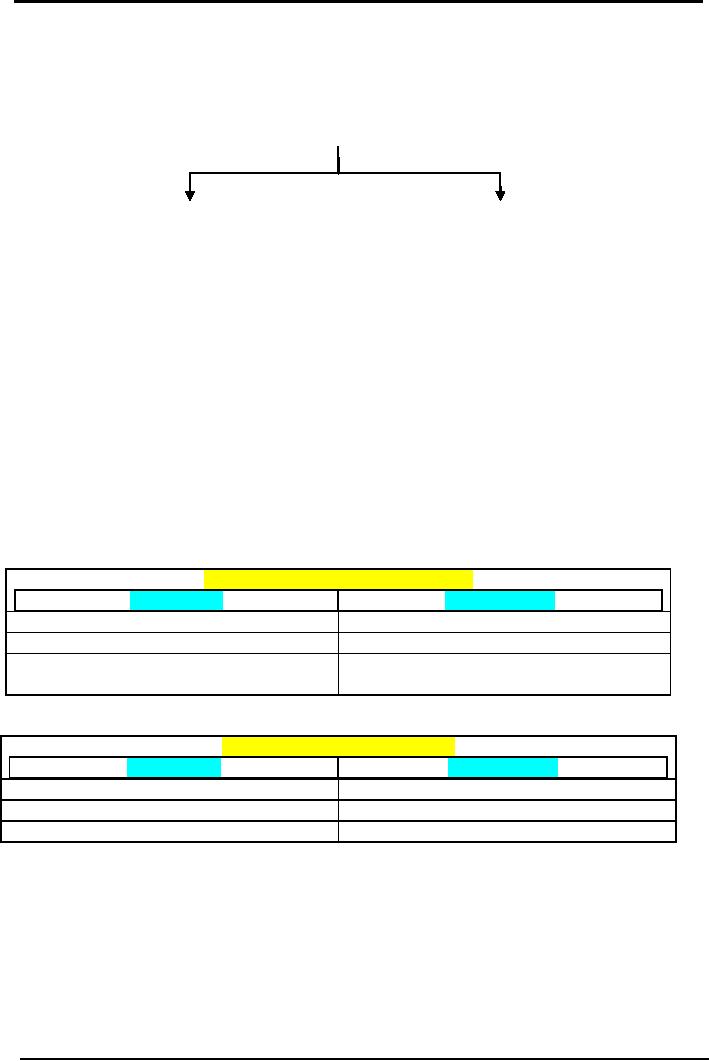
Cost
& Management Accounting
(MGT-402)
VU
LESSON
# 10
ACCOUNTING
FOR LOSSES
There
is always a chance of occurrence of
losses during the
manufacturing process and
even in the
finished
goods godown. Such losses
are classified as normal
loss and abnormal
loss:
LOSSES
Normal
losses
Abnormal
losses
Normal
loss
Occurrence
of this type of loss is
always expected. It is unavoidable loss
and is inherent in
the
manufacturing
process or its chances of happening are
more likely than not.
For example; while
transporting
petrol, it is normal that a
little quantity will be
evaporated.
Abnormal
loss
It
is an unexpected loss. Measures are
always taken to avoid abnormal
losses. For example;
security
system
is installed to secure loss by theft
from godown of finished
goods. Safety measures
are
undertaken
during manufacturing process
against any loss of breakage of
the output. Special care
is
taken
during transportation of petrol to avoid
its leakage.
Normal
and abnormal losses are
treated differently in the
financial accounting and in
the cost
accounting
as well. Following is the self
explanatory chart that will
help in understanding
the
difference
between accounting treatment of
the two different types of
losses.
Treatment
in Financial Accounting
Normal
loss
Abnormal
loss
1.
Ignored
(no treatment).
1.
Specifically
recorded
2.
Per
unit cost increases.
2.
Inventory
per unit cost remains
same
3.
Normal
losses are absorbed by the
good
units.
Treatment
in Cost Accounting
Normal
loss
Abnormal
loss
1.
Charged
to FOH account.
1.
Charged
to specific WIP account.
2.
Overall
per unit cost
increases
3.
No impact on
individual job cost.
In
manufacturing process there
are two types of distortions
that can be identified as
losses:
1.
Defective output/work
2.
Spoiled output
Defective
output/work
At
the end of or during the
manufacturing process the inspection or
quality control
department
tells
about the defective output/work.
This can be made good by
adding further cost into
it. For
example;
in a winding department, 10 of the
capacitors were found
improperly wound up.
A
60
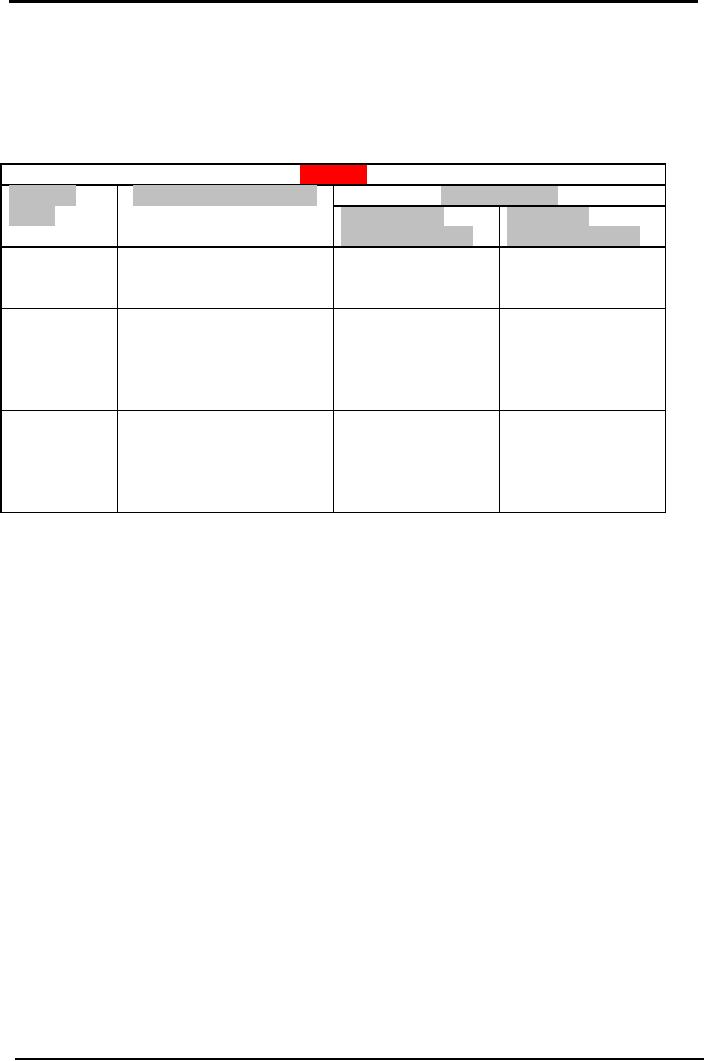
Cost
& Management Accounting
(MGT-402)
VU
further
cost of material, labor and FOH
will be required to re-wind these
capacitors. Doing
this
will
remove the defect. (Output means
completed units/work means in
process).
Spoiled
output
This
is cost of the goods that
have been destroyed because
of any reason. This can not
be made
good
and therefore are sold as
scrap inventory.
LOSSES
Types
of
Defective
Output/Work
Spoiled
Output
losses
Having
some
Having
no
recoverable
value
recoverable
value
Cost
of loss
Total
cost of
Additional
cost (Material,
Total
cost of
charged
as
production
(less)
Labor,
FOH)
production
expenses
recoverable
value
Accounting
Scrap
inventory
FOH
control A/C
Entries
FOH
control A/c
Material
FOH
control A/c
Normal
WIP
or Job A/c
Payroll
WIP
or Job A/c
losses
FOH
applied/(items)
Accounting
Scrap
inventory
WIP
or Job A/C
Entries
WIP
or Job A/c
Material
Abnormal
No
Entry
Payroll
losses
FOH
applied/(items)
Accounting
treatment
Normal
loss
Normal
losses are charged to
factory overhead control
account and thence become
part of
the
total production/manufacturing
cost.
The
additional cost incurred to
remove the defect is
charged to the factory
overhead cost,
as
it is explained in the accounting
entry shown in the above
table.
Whereas,
the total cost of spoiled
output is taken
out of the cost already
charged to the
job
and is then split into to
two; scrap inventory and
factory overhead cost.
Scrap
inventory
shows the amount recoverable
from the spoiled output
through its disposal
and
the
balancing amount that is
estimated to be irrecoverable is charged to
the factory
overhead
cost. Where nothing is expected to be
recovered from the scrap
inventory, total
cost
of the spoiled output is taken
out of the job and
charged to the factory
overhead.
Abnormal
loss
Abnormal
losses are charged to the
specific job/work in process
account and thence
become
part of the cost of the
specific job. This treatment
causes an increase in the
cost of
the
job.
The
additional cost incurred to
remove the defect is
charged to the work in
process
account,
as it is explained in the accounting
entry shown in the above
table.
Whereas,
a part of the cost of spoiled
output that
is expected to be recoverable
(scrap
inventory),
is taken out of the cost
charged to the job. The
estimated irrecoverable cost
(loss
portion) remains a part of
cost of the job, which
means that the loss
has been charged
to
the job.
Scrap
inventory shows the amount
recoverable from the spoiled
output through its
disposal.
Where nothing is expected to be recovered
from the scrap inventory,
no
accounting
entry in this case is required to be
passes, as total cost of the
spoiled output is
irrecoverable
and should remain in the
cost of the job.
61
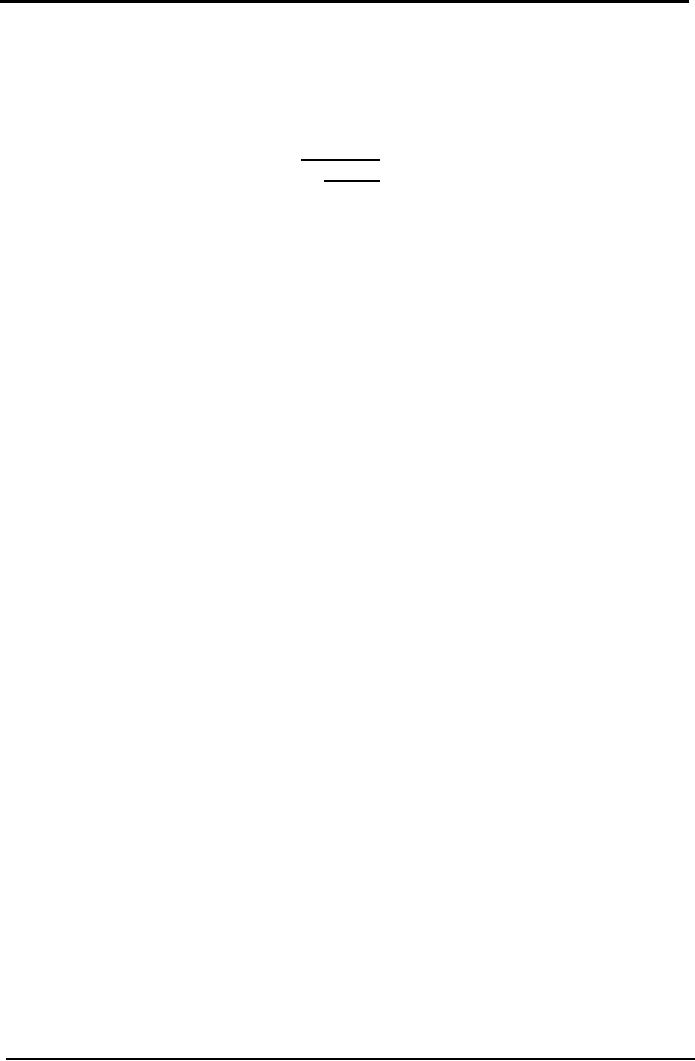
Cost
& Management Accounting
(MGT-402)
VU
Practice
Question
Q.
1
A
& Co manufactured 500 ceiling fans to
fill an order by
incurring:
Direct
material
Rs.
150,000
Direct
labor cost
100,000
F.O.H
(60%
of labor cost)
60,000
Total
production cost
310,000
Some
of the work was found
defective, to make good such loss,
following cost was
incurred:
Rework
cost on defective work
Material
Rs.
10,000
Labor
30,000
F.O.H
(60%
of Labor cost)
18,000
Required:
Pass
accounting entries to record the
cost incurred along with the
adjusting entry
for
re-work cost, treating the
loss as:
a)
Normal
b)
Abnormal
Solution
a)
Normal loss
Work
in process A/C
310,000
Material
150,000
Payroll
100,000
F.O.H
applied
60,000
FOH
Control A/C
58,000
Material
10,000
Payroll
30,000
F.O.H
applied
18,000
Finished
goods A/C
310,000
Work
in process A/C
310,000
Cost
per unit =
310,000/500
=
Rs.
620 per unit
b)
Abnormal loss
Work
in process A/C
310,000
Material
150,000
Payroll
100,000
F.O.H
applied
60,000
Work
in process A/C
58,000
Material
10,000
Payroll
30,000
F.O.H
applied
18,000
Finished
goods A/C
368,000
Work
in process A/C
368,000
Cost
per unit =
368,000/500
=
Rs.
736 per unit
62
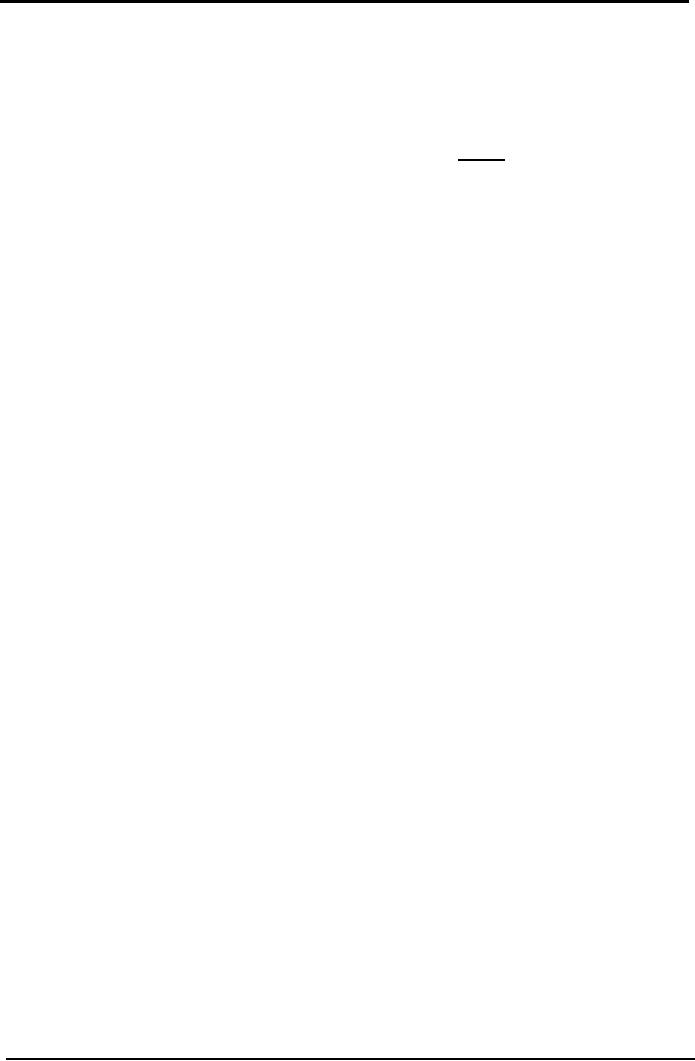
Cost
& Management Accounting
(MGT-402)
VU
Q.
2
Using
the data in Q. 1, now
suppose the spoiled output
is 50 fans, which can be sold as scrap
for
Rs.
200 each.
Cost
of spoiled output
=
Rs. 310,000 x 50
=
Rs.
31,000
Estimated
recoverable amount = Rs. 200
x 50
=
Rs.
10,000
Cost
of loss
Rs.
21,000
Solution
a)
Normal loss
Work
in process A/C
310,000
Material
150,000
Payroll
100,000
F.O.H
applied
60,000
Scrap
inventory
10,000
FOH
Control A/C
21,000
Work
in process A/C
31,000
Finished
goods A/C
279,000
Work
in process A/C
279,000
Cost
per unit =
279,000/500
=
Rs.
558 per unit
b)
Abnormal loss
Work
in process A/C
310,000
Material
150,000
Payroll
100,000
F.O.H
applied
60,000
Scrap
inventory
10,000
Work
in process A/C
10,000
Finished
goods A/C
300,000
Work
in process A/C
300,000
Cost
per unit =
300,000/500
=
Rs.
600 per unit
Different
documents are used in the
process of requisition, purchasing,
production and for
procurement
of material. These are used in
sequence presented in the
following diagram:
63
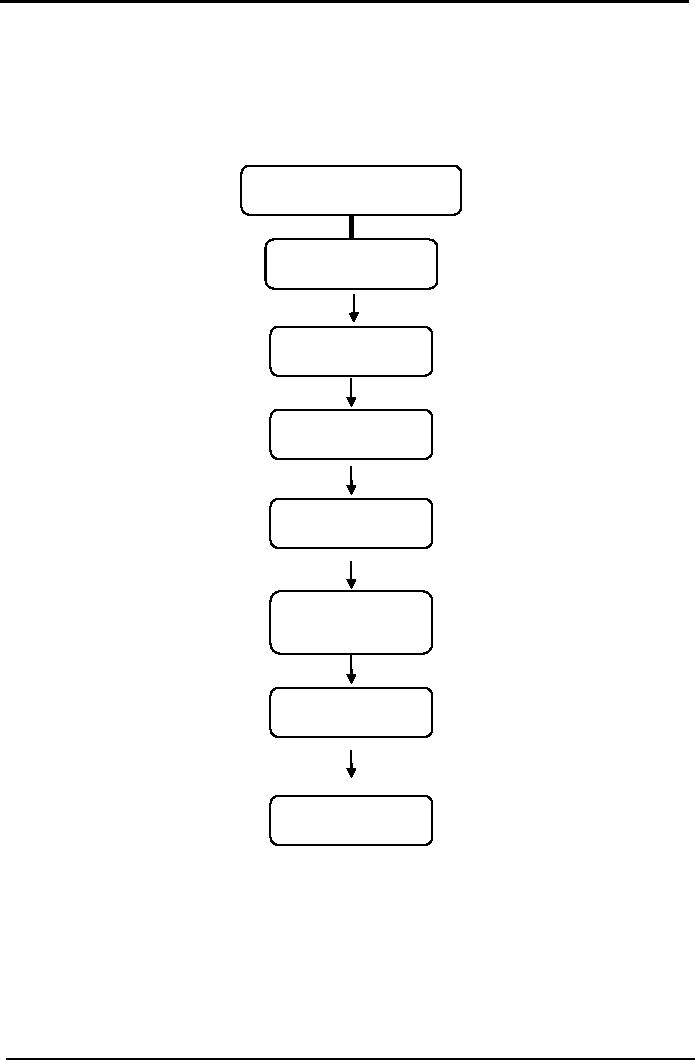
Cost
& Management Accounting
(MGT-402)
VU
Material
/ Store requisition
Purchase
requisition
Purchase
order
Delivery
note
Purchase
invoice
Goods
received
note
Bin
card
Store
ledger card
64

Cost
& Management Accounting
(MGT-402)
VU
Material/Store
Requisition
It
is a document through which
work station incharge requires/receives
material from the store.
It
is
sent to the store incharge
duly approved by the production
manager, stating the number of
units
required
for consumption based on
which the store incharge
issues the required material to
the
work
shop.
Purchase
Requisition
It
is forwarded by the store department to
the purchase department, indicating
the maximum and
minimum
stock levels, it also states
the reorder level along with
the economic order quantity. It
is
used
to require further purchase to be made by
the purchase department. It
also indicates the
current
position of the material in the
store.
Purchase
Order
It
is used to place order to
the supplier for purchase of
further material. This document
contains
information
regarding the quantity, specification,
rate, discount, settlement
term, time of
delivery,
and
dealing person. Based on the
purchase order the supplier
manages to deliver material to
the
ordering
entity.
Delivery
Note
It
is issued by the supplier/seller to
the purchaser, mentioning the
quantity and specification of
the
material
dispatched. On receipt of the material
the recipient acknowledges by the
signing the
delivery
note and returns it back to
the supplier
Purchase
Invoice
It
is the document that
evidences the transaction of purchase of
material. It is issued by the
seller
stating
quantity, rate, discount,
and amount of the purchased
material. Settlement terms are
also
stated
at bottom of the invoice.
Receiving an invoice means
that money is payable to the
supplier.
Goods
Received Note
It
is prepared by the inspection department
after verifying the quantity
and quality of the
material
received.
Received material along with the
goods received note is sent
to the store
incharge.
Bin
Card
Store
incharge after receiving the material as
per the goods received
note, places the material at
its
location
and makes an entry in the
bin card. Bin card is
used to maintain physical record of
the
material
received in and issued from
the store. It updated for
balance in the store after
each
transaction.
It also contains information regarding
reorder level, economic order
quantity,
maximum
and minimum stock levels,
maximum and minimum daily
consumption, and lead
time.
It
is placed at the location where
the material is stored.
Store
Ledger Card
It
is maintained by the accounting
department, more precisely stating it is
maintained by the cost
accounting
department that is concerned about
the calculation of cost per
unit. It is similar to the
bin
card as far as receipt and
issue of the quantity of material is
concerned, but the main
purpose
of
maintaining the store ledger
card is to know the cost of
material consumed and material in
store
along
with the cost per
unit of the material. Store
ledger card is maintained using the
FIFI, LIFO
and
W Avg methods.
Inventory
Turnover Ratio
Inventory
Turnover ratio shows the
stock position of the store
room. In how many
times
inventory
is used in a year and for
how long the inventory is
held in the store.
65
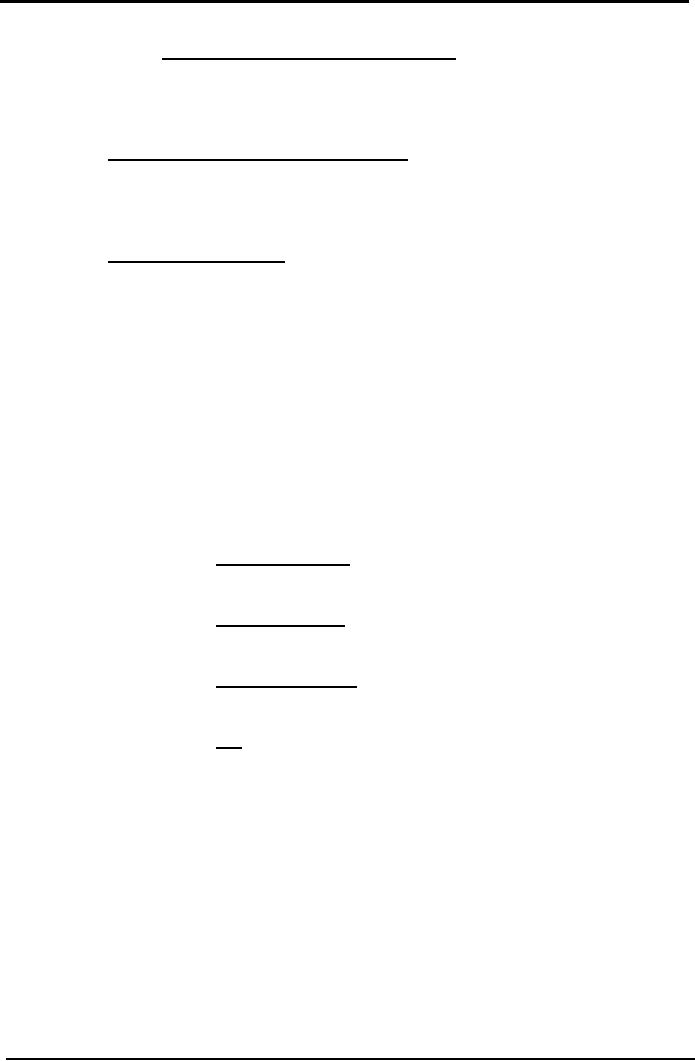
Cost
& Management Accounting
(MGT-402)
VU
Inventory
Turn over Ratio
Cost
of goods sold or Material consumed =
times
Average
Inventory
Average
Inventory
Opening
Inventory +
Closing
Inventory = Average
inventory
2
Stock
holding period
Number
of days in a year =
number
of days
Inventory
turnover ratio
PRACTICE
QUESTION
Opening
stock
1,000
units
Material
Purchase
7,000
units
Closing
Stock
500
units
Material
consumed
Rs.
7,500
Solution
Inventory
Turn over Ratio
Material
consumed
Average
Inventory
7500
.=
10
times
(1000+500)/2
Inventory
holding period
No
of days in a year
Inventory
Turn over Ratio
=
36 days
360
10
MULTIPLE
CHOICE QUESTIONS
The
following information is to be used
for questions 1 and 2
A
national chain of tyre fitters
stocks a popular tyre for
which the following
information is
available:
Average
usage: 140 tyres per
day
Minimum
usage: 90 tyres per
day
Maximum
usage: 175 tyres per
day
Lead
time:
10
to 16 days
Re-order
quantity: 3,000 tyres
1
Based on the data above, at
what level of stocks should
a replenishment order be
issued?
A
2,240
B
2,800
66

Cost
& Management Accounting
(MGT-402)
VU
C
3,000
D
5,740
2
Based on the data above,
what should be the maximum
level of stocks
possible?
A
2,800
B
3,000
C
4,900
D
5,800
3
Moura
uses the economic order
quantity formula (EOQ) to
establish its optimal reorder
quantity
for its single raw material.
The following data relates
to the stock costs:
Purchase
price: �15 per
item
Carriage
costs:
�50
per order
Ordering
costs: �5 per
order
Storage
costs:
10%
of purchase price plus �0.20
per unit per
annum
Annual
demand is 4,000
units.
What
is the EOQ to the nearest
whole unit?
A
53 units
B
170 units
C
485 units
D
509 units
4
Which of the following
statements is correct?
A
store ledger account will be
updated from goods received
note only.
A.
A stores requisition will
only detail the type of
product required by a customer.
B.
The term 'lead time' is
best used to describe the
time between receiving an order
and
paying
for it.
C.
To make an issue from stores
authorization should be required.
5
What would be the most
appropriate cost unit for a
cake manufacturer?
Cost
per:
A
Cake
B
Batch produced
C
Kilogram produced
D
Production run
The
following information relates to
questions 6 and 7
Turner
Limited has the following
stock record:
Date
Number
of units
Cost
(Rupees)
1
March Opening stock 100
units
at
3.00/unit
3
March Receipt
200
units
at
3.50/unit
8
March Issue
250
units
15
March Receipt
300
units
at
3.20/unit
17
March Receipt
200
units
at
3.30/unit
21
March Issue
500
units
23
March Receipt
450
units
at
3.10/unit
27
March Issue
350
units
6
What is the valuation of closing stock
using LIFO at each issue?
A
Rs. 460
B
Rs. 465
67

Cost
& Management Accounting
(MGT-402)
VU
C
Rs. 467
D
Rs. 469
7
What
is the valuation of issues using
the weighted average method of stock
valuation at each
issue?
A
Rs. 3,248
B
Rs. 3,548
C
Rs. 3,715
D
Rs. 4,015
68
Table of Contents:
- COST CLASSIFICATION AND COST BEHAVIOR INTRODUCTION:COST CLASSIFICATION,
- IMPORTANT TERMINOLOGIES:Cost Center, Profit Centre, Differential Cost or Incremental cost
- FINANCIAL STATEMENTS:Inventory, Direct Material Consumed, Total Factory Cost
- FINANCIAL STATEMENTS:Adjustment in the Entire Production, Adjustment in the Income Statement
- PROBLEMS IN PREPARATION OF FINANCIAL STATEMENTS:Gross Profit Margin Rate, Net Profit Ratio
- MORE ABOUT PREPARATION OF FINANCIAL STATEMENTS:Conversion Cost
- MATERIAL:Inventory, Perpetual Inventory System, Weighted Average Method (W.Avg)
- CONTROL OVER MATERIAL:Order Level, Maximum Stock Level, Danger Level
- ECONOMIC ORDERING QUANTITY:EOQ Graph, PROBLEMS
- ACCOUNTING FOR LOSSES:Spoiled output, Accounting treatment, Inventory Turnover Ratio
- LABOR:Direct Labor Cost, Mechanical Methods, MAKING PAYMENTS TO EMPLOYEES
- PAYROLL AND INCENTIVES:Systems of Wages, Premium Plans
- PIECE RATE BASE PREMIUM PLANS:Suitability of Piece Rate System, GROUP BONUS SYSTEMS
- LABOR TURNOVER AND LABOR EFFICIENCY RATIOS & FACTORY OVERHEAD COST
- ALLOCATION AND APPORTIONMENT OF FOH COST
- FACTORY OVERHEAD COST:Marketing, Research and development
- FACTORY OVERHEAD COST:Spending Variance, Capacity/Volume Variance
- JOB ORDER COSTING SYSTEM:Direct Materials, Direct Labor, Factory Overhead
- PROCESS COSTING SYSTEM:Data Collection, Cost of Completed Output
- PROCESS COSTING SYSTEM:Cost of Production Report, Quantity Schedule
- PROCESS COSTING SYSTEM:Normal Loss at the End of Process
- PROCESS COSTING SYSTEM:PRACTICE QUESTION
- PROCESS COSTING SYSTEM:Partially-processed units, Equivalent units
- PROCESS COSTING SYSTEM:Weighted average method, Cost of Production Report
- COSTING/VALUATION OF JOINT AND BY PRODUCTS:Accounting for joint products
- COSTING/VALUATION OF JOINT AND BY PRODUCTS:Problems of common costs
- MARGINAL AND ABSORPTION COSTING:Contribution Margin, Marginal cost per unit
- MARGINAL AND ABSORPTION COSTING:Contribution and profit
- COST – VOLUME – PROFIT ANALYSIS:Contribution Margin Approach & CVP Analysis
- COST – VOLUME – PROFIT ANALYSIS:Target Contribution Margin
- BREAK EVEN ANALYSIS – MARGIN OF SAFETY:Margin of Safety (MOS), Using Budget profit
- BREAKEVEN ANALYSIS – CHARTS AND GRAPHS:Usefulness of charts
- WHAT IS A BUDGET?:Budgetary control, Making a Forecast, Preparing budgets
- Production & Sales Budget:Rolling budget, Sales budget
- Production & Sales Budget:Illustration 1, Production budget
- FLEXIBLE BUDGET:Capacity and volume, Theoretical Capacity
- FLEXIBLE BUDGET:ANALYSIS OF COST BEHAVIOR, Fixed Expenses
- TYPES OF BUDGET:Format of Cash Budget,
- Complex Cash Budget & Flexible Budget:Comparing actual with original budget
- FLEXIBLE & ZERO BASE BUDGETING:Efficiency Ratio, Performance budgeting
- DECISION MAKING IN MANAGEMENT ACCOUNTING:Spare capacity costs, Sunk cost
- DECISION MAKING:Size of fund, Income statement
- DECISION MAKING:Avoidable Costs, Non-Relevant Variable Costs, Absorbed Overhead
- DECISION MAKING CHOICE OF PRODUCT (PRODUCT MIX) DECISIONS
- DECISION MAKING CHOICE OF PRODUCT (PRODUCT MIX) DECISIONS:MAKE OR BUY DECISIONS